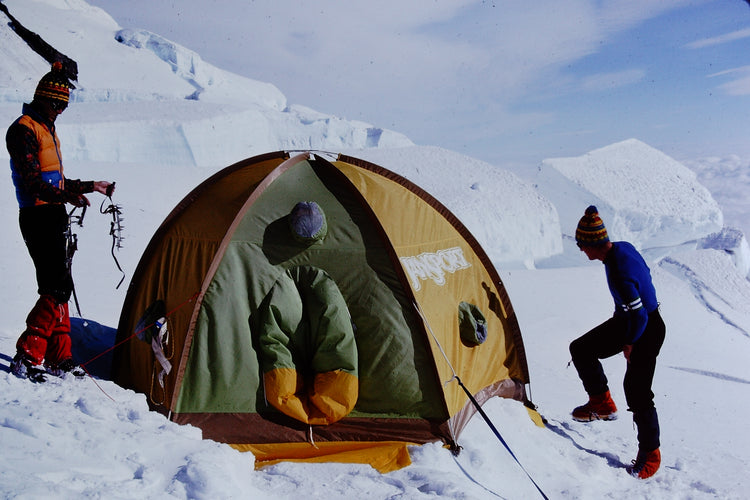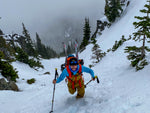Mountaineering, once considered an adventurous pursuit reserved for a select few, has experienced remarkable changes since Jim Whittaker looked out over the Himalayas in the 1963. As technology advanced and explorers pushed the boundaries of what was possible, the sport evolved profoundly. In this article, we'll delve into five significant ways mountaineering has transformed over the decades, reflecting on the impact these changes have had on climbers and the mountains they love.
Equipment and Gear Advancements
One of the most noticeable transformations in mountaineering since the 1950s lies in the realm of equipment and gear. Technological advancements have revolutionized gear construction, making it lighter, stronger, and more specialized. The introduction of high-performance fabrics, such as Gore-Tex, has enhanced climbers' protection against the elements while allowing for better breathability. Modern mountaineering boots, crampons, ice axes, and harnesses have undergone significant improvements, providing climbers with greater security and agility and comfort.Communication and Safety Measures
In the past, mountaineers relied on limited communication, often isolated from the outside world during their expeditions. However, the advent of satellite technology and portable communication devices has revolutionized communication in the mountains. Modern climbers can stay connected with rescue teams, fellow climbers, and loved ones, improving safety and facilitating coordination during emergencies.
Additionally, advancements in safety measures, such as the introduction of avalanche beacons, GPS devices, and personal locator beacons (PLBs), have significantly enhanced climbers' ability to navigate and mitigate risks in remote mountain environments by allowing us to monitor weather forecasts, get emergency alerts, and stay connected.
Expedition Planning and Route Information
Mountaineering expeditions have evolved with the availability of comprehensive route information and detailed topographic maps. In the past, climbers heavily relied on limited maps and verbal accounts from previous expeditions. Today, climbers benefit from digital platforms, like Gaia GPS and other mountaineering apps, which offer accurate maps, route planning tools, and real-time weather updates. Access to online forums and community-driven platforms allows climbers to share experiences, route conditions, and valuable beta, making expedition planning more informed and collaborative.
Environmental Awareness and Sustainability
Over the years, mountaineering has witnessed a significant shift toward environmental awareness and sustainability. Mountaineers now recognize their role as stewards of the mountains and actively engage in practices that minimize their impact on fragile ecosystems. High Alpine Leave No Trace principles (developed in large part by RMI Expeditions) have become integral to mountaineering ethics, promoting responsible camping, waste management, and preservation of natural landscapes. Environmental consciousness has fueled initiatives like clean-up expeditions and conservation projects, ensuring the mountains remain pristine for future generations.
Inclusion and Diversity
In the 1950s, mountaineering was predominantly a male-dominated activity, with limited representation from diverse communities. However, there has been a growing emphasis on inclusivity and diversity within the mountaineering community in recent decades. More women are pursuing mountaineering, breaking barriers and achieving remarkable feats. Organizations and initiatives dedicated to fostering diversity in outdoor pursuits have emerged, ensuring that mountaineering becomes accessible to individuals from all backgrounds and cultures.
The evolution of mountaineering since the 1950s showcases how this sport has embraced innovation, safety, environmental consciousness, and inclusivity. From advancements in gear technology and communication devices to the promotion of sustainable practices and the push for diversity, mountaineering continues to evolve in remarkable ways.
As climbers embark on their journeys today, they stand on the shoulders of those who paved the way in the past. By embracing the advancements of the modern era while honoring the traditions and spirit of the sport, mountaineers forge new paths and contribute to the rich tapestry of mountaineering history. Let us celebrate the transformative changes that have shaped mountaineering and look forward to a future that embraces even more innovation, respect for nature, and shared mountain experiences.



It’s wonderful to learn some history and opinions about mountaineering in addition to the sale of gear and the training blogs (both of which are wonderful.) This is a welcomed addition to the culture of mountaineering that you at Whittaker are helping to create! Thanks for sending an article like this our way :)
Love your company. Let’s keep advancing by eliminating PFAS, BPA and phthalates from products used in mountaineering. Thanks!